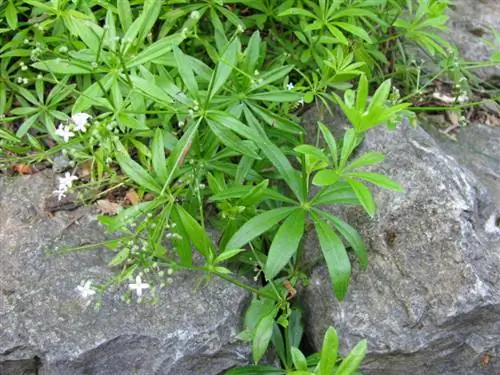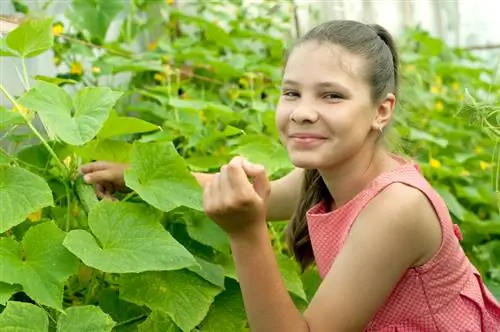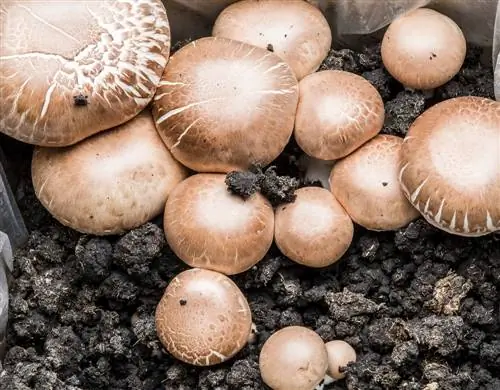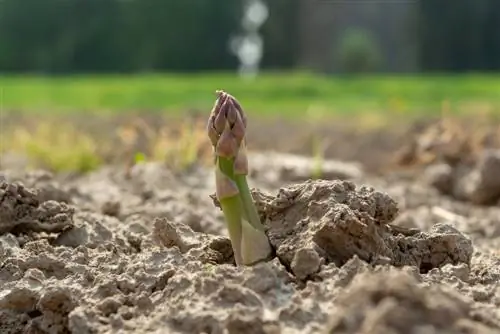- Author admin [email protected].
- Public 2023-12-16 16:46.
- Last modified 2025-01-23 11:20.
In the wild, woodruff multiplies practically by itself in suitable locations. The aromatic and medicinal plant can also be propagated relatively easily in the garden.
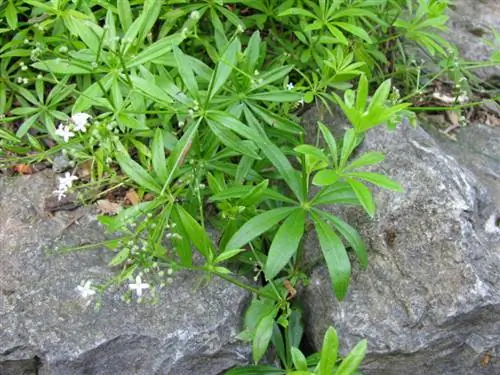
How can I propagate woodruff?
Woodruff can be propagated by sowing the seeds in autumn in shady locations or by dividing the root runners in autumn. Make sure there is sufficient water supply during the germination phase and give freshly planted woodruff a rest period.
The propagation of woodruff by sowing
When the woodruff's flowering period ends between mid and late May, the delicate white flowers produce relatively small seeds that ensure proliferation around the plant's location. For sowing in the garden, you can purchase Galium odoratum seeds from well-stocked specialist retailers. You have to sow these in autumn at the latest if you want to harvest the first woodruff stalks in spring. When sowing, pay attention to:
- a shady location with well-drained soil
- covering the seeds with a layer of soil about 0.5 centimeters thick
- the uniform water supply to the substrate during the germination phase
Propagate the woodruff by division
In wild locations in the forest, woodruff often forms extensive carpets that are covered in numerous white flowers in the shape of small crosses during the flowering period from mid-April to mid-May. This density of growth occurs not only through self-sowing of the small seeds, but also through propagation via root runners. This makes it possible to propagate the woodruff in the garden by division. To do this, ideally dig up the woodruff on a mild autumn day and reinsert the pieces of rootstock you divided with the spade into the new locations.
Give the woodruff enough time before harvesting
So that a sufficiently large plant cushion can form in one place in the garden for a rich harvest, you should first give newly planted woodruff a closed season. This is the only way the sensitive roots can develop without disruption and form additional plant stems.
Tips & Tricks
So that enough seeds and root runners can form at the site for self-sowing, you should always leave a sufficiently large number of stems when collecting.

